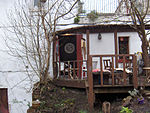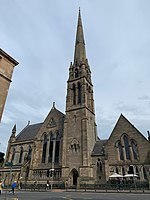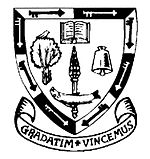Kelvinbridge railway station
1968 disasters in the United Kingdom1968 fires in the United KingdomBuilding and structure fires in ScotlandDisasters in GlasgowDisused railway stations in Glasgow ... and 10 more
Former Caledonian Railway stationsHillheadJames Miller railway stationsPages with no open date in Infobox stationRailway stations in Great Britain closed in 1917Railway stations in Great Britain closed in 1952Railway stations in Great Britain opened in 1896Railway stations in Great Britain opened in 1919Train and rapid transit firesUse British English from March 2021

Kelvinbridge was a railway station for the Kelvinbridge area in the West End of Glasgow, close to Kelvinbridge subway station on the Glasgow Subway.
Excerpt from the Wikipedia article Kelvinbridge railway station (License: CC BY-SA 3.0, Authors, Images).Kelvinbridge railway station
Caledonian Crescent, Glasgow North Woodside
Geographical coordinates (GPS) Address Nearby Places Show on map
Geographical coordinates (GPS)
| Latitude | Longitude |
|---|---|
| N 55.8747 ° | E -4.2811 ° |
Address
Caledonian Crescent
Caledonian Crescent
G12 8HQ Glasgow, North Woodside
Scotland, United Kingdom
Open on Google Maps









